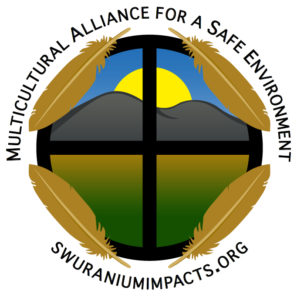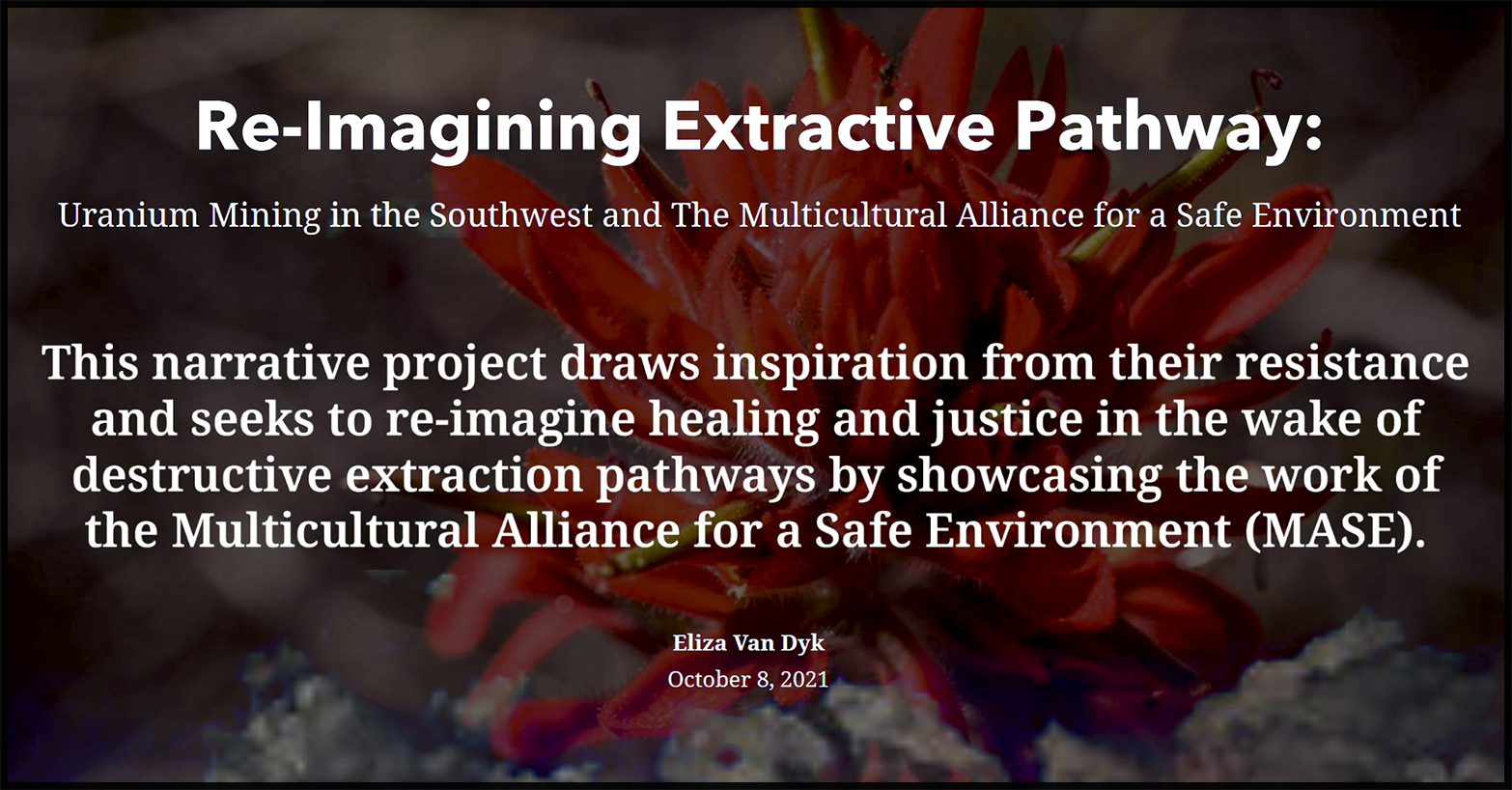18.03.30 Comments on the proposal to add mining as a covered sector under FAST-41
March 30, 2018
Federal Permitting Improvement Steering Council 1800 F St., NW Washington, DC 20405 FAST.FortyOne@fpisc.gov Janet.pfleeger@fpisc.gov Re: Comments on the proposal to add mining as a covered sector under FAST-41 Dear Federal Permitting Improvement Steering Council members,
On behalf of mining impacted communities across the West, we submit these comments to oppose adding mining as a covered sector under Title 41 of the Fixing America’s Surface Transportation Act (FAST-41). Any permitting scheme covered by FAST-41 is wholly unfit for the kind of community outreach and environmental review needed for hardrock mining proposals.
Mining creates more harmful impacts than Congress ever intended covered by FAST-41 sectors. Mining produces vast quantities of toxic waste, that must be managed in perpetuity. This is not simply a problem from legacy mines. Even new mines experience seepage and releases to the environment. Mines are unique, highly variable, and pose environmental problems that can take a very long time to analyze. Faster decision-making does not mean better decisions. Instead of FAST-41, we need more rigorous permitting to reduce environmental, public health, and taxpayer costs imposed by mining. Mining Poses Unique Environmental Problems Not Suited for Faster Permitting Mining creates serious environmental risks over a very long time. The mining industry releases more toxic waste than any other, and much more those Congress contemplated for FAST-41.1 Most waste is stored in enormous structures vulnerable to failure that often require water treatment forever. Accidents and seepage at operating U.S. gold and copper mines are commonplace.2 According to EPA’s most recent Toxic Release Inventory, the metal mining sector was responsible for 44% of the 3.44 billion pounds of toxic substances that were released into the environment in 2016, even though the sector only manages 6% of all the toxic waste produced 1 TRI On-site and Off-site Reported Disposed of or Otherwise Released (in pounds), for All chemicals, By Industry, U.S., 2016 (https://iaspub.epa.gov/triexplorer/tri_release.industry accessed 22Mar18) 2 https://earthworks.org/publications/us_copper_porphyry_mines/; https://earthworks.org/publications/us_gold_mines_spills_failures/ by American industries.3 Analysis of government documents reveals that just 40 mines will generate an estimated 17 to 27 billion gallons of polluted water annually, forever.4 In addition to pollution from regular accidents and leaks, these facilities also threaten catastrophic releases. A catastrophic accident occurred at the Gold King Mine in Colorado, for example, 92 years after mining ceased, resulting in over a million gallons of heavy metalcontaminated water pouring into the San Juan River upstream of thousands of local residents and the Navajo Nation.5 In 2014, a sudden loss of containment at the modern Mount Polley copper and gold mine in British Columbia spilled over six billion gallons of toxic mine waste and wastewater into the surrounding watershed.6 The primary cause of this lasting pollution – acid mine drainage – is well understood. Yet, no modern hard rock open pit mines have demonstrated that acid mine drainage can be stopped once it occurs on a large scale.7 Polluted water still flows from Roman mines built 1,500 years ago.8 Agencies cannot be hurried in grappling with these grave impacts during the permitting process. Mine permitting must remain flexible to account for unique contingencies and challenges. Each mine and mine location will vary in hydrology, geology, seismology, ecology, and cultural, historic, and recreational resources. While some analyses can run concurrently, others may be best performed in sequence- allowing for a more thorough scientific review. Mine plans also vary in extraction processes, excavation approaches, footprint and throughput volume. Typically, a mine operates for many decades, constantly expanding its footprint, increasing its waste and the risk of new releases. Mine Permitting Should Be More Rigorous Data indicate significant impacts to water quality continue to occur from new mining. A 2012 report reviewed the track record of 14 currently operating U.S. copper mines accounting for 87% of U.S. copper production.9 Based on a review of state and federal government documents, it found that 92% of the mines failed to capture and control mine seepage; 100% experienced spills and other accidental releases and 28% experienced partial or total tailings dam failures. The report concluded that copper porphyry mines are often associated with acid mine drainage, metals leaching and/or accidental releases of toxic materials. A similar report in 2017, entitled 3 EPA, TRI National Analysis 2016: Comparing Industry Sectors (Jan. 2018), https://www.epa.gov/sites/production/files/2018-01/documents/comparing_industry_sectors.pdf. 4 https://earthworks.org/publications/polluting_the_future/ 5 Colorado Public Radio, The Gold King Mine: From An 1887 Claim, Private Profits and Social Costs (Aug. 17, 2015), http://www.cpr.org/news/story/gold-king-mine-1887-claim-privateprofits-and-social-costs. 6 E. Schoenfeld, Alaska Public Media, Mount Polley Mine to discharge wastewater (Dec. 2, 2015), https://www.alaskapublic.org/2015/12/02/mount-polley-mine-to-discharge-wastewater/. 7 Id. 8 Reclamation Research Group, “Acid Mine Drainage and Effects on Fish Health and Ecology: A Review,” for U.S. Fish and Wildlife Service at 4 (July 2008). 9 https://earthworks.org/publications/us_copper_porphyry_mines/ “U.S. Gold Mines: Spills & Failures Report,” reviewed 27 currently operating gold mines accounting for 93% of U.S. gold production.10 Water quality impacts were identified at 74% of these operations. These reports demonstrate that new mines create new problems. Speeding through the permit process will lead agencies to miss problems that arise. Domestic Mining Permitting is Globally Competitive On average, the Bureau of Land Management spends two years permitting a mine, competitive with Australia, Canada, Chile, Norway other democracies with robust mining industries. In fact, a 2017 Government Accountability Office report demonstrated that the primary cause for permitting delays is the poor quality or lack of information provided by the project proponent.11 Adding the Mining Sector to Fast 41 Reduces Community Input Adding mining to FAST-41 reduces the influence communities have over government decisions affecting their water, health, and quality of life. Often, communities have valuable information agencies should consider; not all wisdom resides with the government or project proponent. That information best comes from Administrative Procedures Act rule making, tribal consultation, and the reliable National Environmental Policy Act processes. Mines affect all kinds of people, including those who live in remote areas or rely on seasonal subsistence or employment. They deserve more than a month and a half to review our government’s decisions. Conclusion Mining does not belong in FAST-41. Faster permitting can lead to poorer decisions for a polluting industry needing stronger environmental protections. The government already churns out timely permits despite the widespread continuation of mine accidents and pollution. This proposal limits community input and takes us in the wrong direction. Sincerely, Alaska Community Action on Toxics American Rivers American Whitewater Amigos Bravos Arizona Mining Reform Coalition Deer Tail Scientific 10 https://earthworks.org/publications/us_gold_mines_spills_failures/ 11 See Hardrock Mining: BLM and Forest Service Have Taken Some Actions to Expedite the Mine Plan Review Process but Could Do More https://www.gao.gov/products/GAO-16-165 Earthworks Friends of the Clearwater Friends of the Kalmiopsis Grand Canyon Trust Great Old Broads for Wilderness, Boise Chapter Kalmiopsis Audubon Society Keweenaw Bay Indian Community Multicultural Alliance for a Safe Environment Native Fish Society Progressive Leadership Alliance of Nevada Rock Creek Alliance Save Our Cabinets Save Our Sky Blue Waters Upper Peninsula Environmental Coalition WaterLegacy Western Organization of Resource Councils





